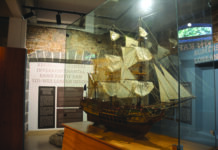Ecological restoration of the Petite Montagne slopes is progressing apace on its northern flank, but the project to enhance Fort Adelaide, which triggered it, seems to have been forgotten… The only English fortification in good condition, its usefulness has been questioned from the outset. Dominique Bellier
An incessant ballet of cabs and tourist buses animates the heights of La Citadelle every day. Even before the fort was built, Port-Louisians used to air out here in the evenings. At around 100 meters above sea level, the view of the capital, the mountains and the port is breathtaking. Open to the public, the building has hosted shows and exhibitions, but its interior spaces remain relatively bare.
Its construction was first envisaged by the French, with the military engineer Desforges-Boucher initiating work in 1743. Work only resumed in 1833 on the initiative of English colonists, and was completed in 1840, illustrating the upheavals associated with the transition from slavery to indentured immigration. Named Adélaïde in honor of King William IV’s wife, the fort benefited from a heterogeneous workforce, ranging from Creole stonemasons to skilled workers from Bombay, as well as military prisoners and convicts from India…
Historian Marina Carter recalls that it was intended to compensate for the absence of a consistent military defense in Mauritius, protecting the capital against external threats as well as internal ones from a French population quick to challenge the English occupiers. In the meantime, the situation had changed so much that it was only used for rare temporary mobilizations.
Restoration in the 1990s augured a renaissance of La Citadelle as a leisure facility. Its complete military architecture would provide a fascinating museum on the tumultuous history of its construction in a key period of history, highlighting its multi-ethnic workforce, its soldiers and its defensive capabilities.








